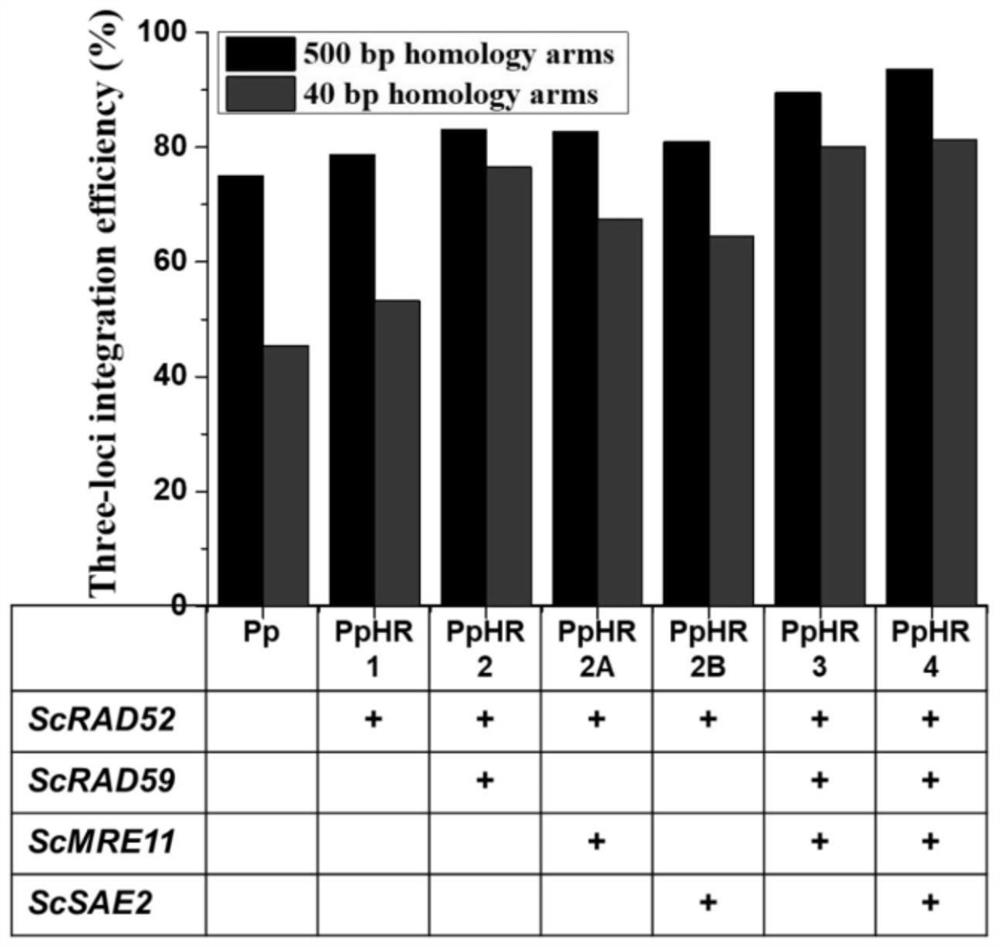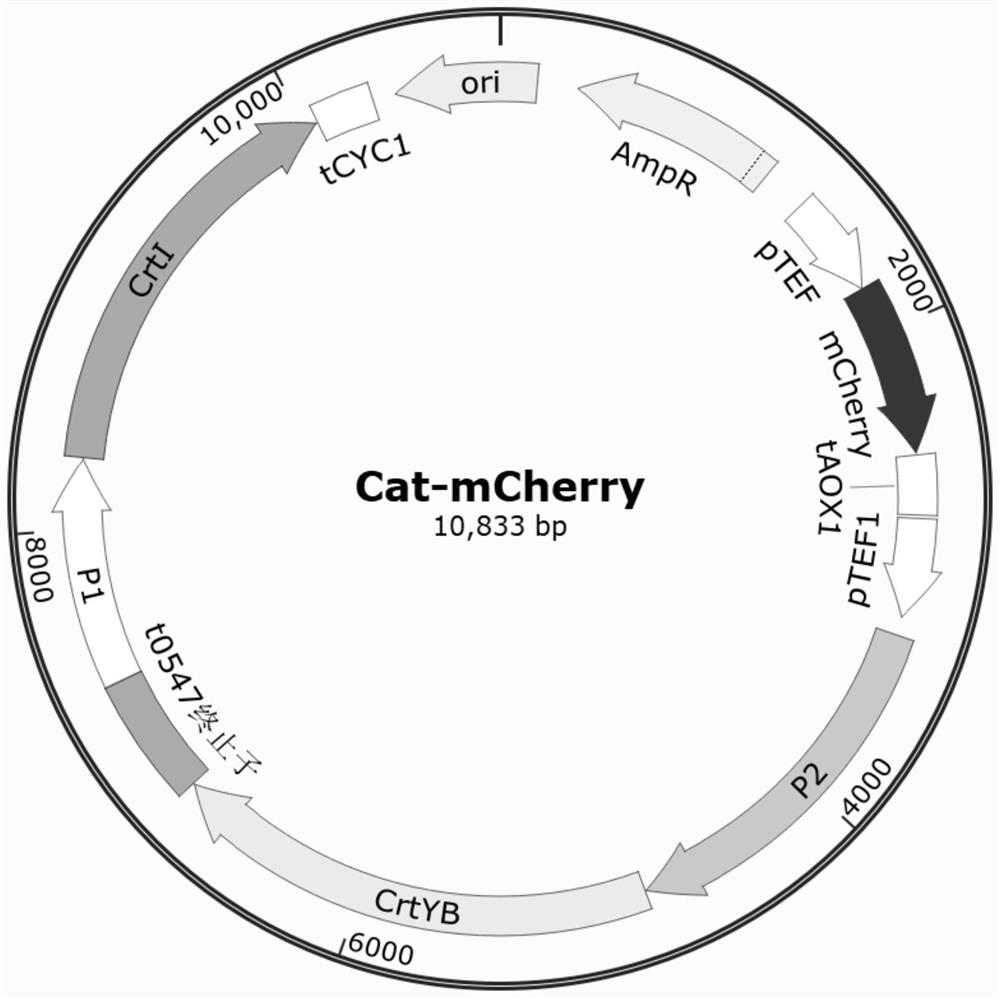Saccharomyces cerevisiae genetically engineered bacterium for enhancing homologous recombination capability and application thereof
A technology of genetically engineered bacteria and homologous recombination, applied in the field of yeast genetically engineered bacteria that enhances the ability of homologous recombination, can solve the problems of reduction and loss of large fragments of chromosome ends.
- Summary
- Abstract
- Description
- Claims
- Application Information
AI Technical Summary
Problems solved by technology
Method used
Image
Examples
Embodiment 1
[0027] Example 1: Pichia pastoris enhanced homologous recombination ability
[0028] (1) Construction of gene vectors related to homologous recombination:
[0029] Using the genomes of Pichia pastoris GS115 and Saccharomyces cerevisiae BY4741 as templates, genes involved in homologous recombination repair were cloned. Specifically: clone PpRAD51 gene (NCBI gene number ID: 8199675) and PpRAD52 gene (NCBI gene number ID: CAY68760) in Pichia pastoris; clone ScRAD52 gene (NCBI gene number ID: 854976), ScRAD51 gene ( NCBI Gene ID: 856831), ScRAD59 gene (NCBI Gene ID: 851500), ScMRE11 gene (NCBI Gene ID: 855264), and ScSAE2 gene (NCBI Gene ID: 852700).
[0030] Use primers with 40bp homology arms (see Table 2 for details) to perform PCR on the corresponding genomic template to obtain gene fragments with corresponding homology arms, and then use Gibson Assembly to recombine to construct the corresponding overexpression plasmid (see Table 3 for details) . Then pick points for verif...
PUM
 Login to View More
Login to View More Abstract
Description
Claims
Application Information
 Login to View More
Login to View More - R&D
- Intellectual Property
- Life Sciences
- Materials
- Tech Scout
- Unparalleled Data Quality
- Higher Quality Content
- 60% Fewer Hallucinations
Browse by: Latest US Patents, China's latest patents, Technical Efficacy Thesaurus, Application Domain, Technology Topic, Popular Technical Reports.
© 2025 PatSnap. All rights reserved.Legal|Privacy policy|Modern Slavery Act Transparency Statement|Sitemap|About US| Contact US: help@patsnap.com



